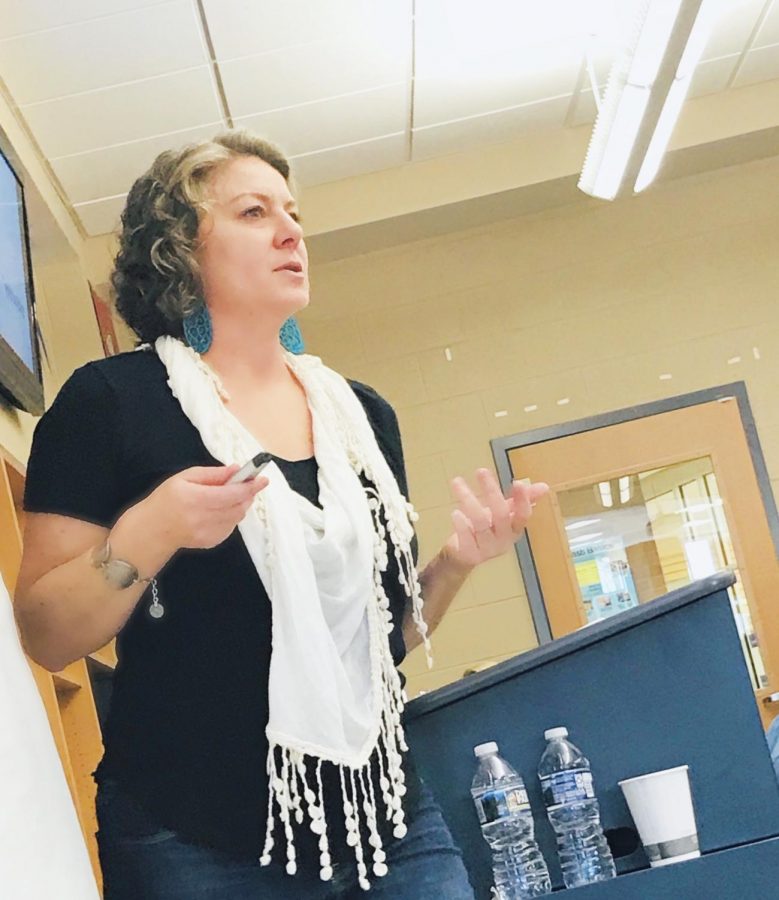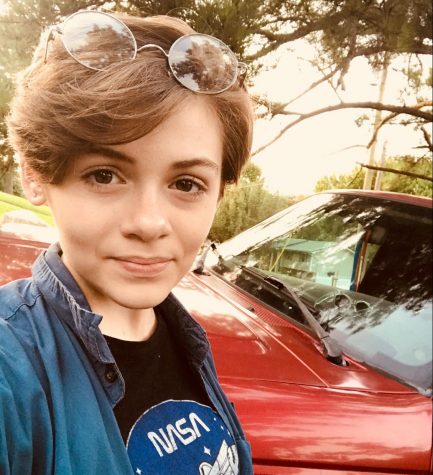AN UNINTERRUPTED VIEW OF AN AUTHOR
E. Delaney
November 12, 2018
You may know Melanie Crowder from an extra-credit assignment students were given over the summer of 2018: to read “An Uninterrupted View of the Sky,” a book surrounding teenager Francisco’s and his family’s hardships living in 1990’s Bolivia. Though many may not have known, Crowder has written five other books, including “Audacity,” “Parched,” “A Nearer Moon,” “The Lighthouse Between the Worlds,” and “Three Pennies.” All of them have been rated from four-and-a-half to five stars on Amazon.
Crowder treated the students of Heritage High School this Wednesday to an all-day visit and workshop, allowing us to ask questions, make comments, and be given advice on how to construct our own stories, poetry, and prose.
First, she had a session with the book club, then a writing workshop, a book signing during lunch, a group assembly with the upperclassmen, and another workshop before leaving Heritage.
The first student to begin the session during the book club meeting, asked about the abruptness and briefness of the chapters in “An Uninterrupted View of the Sky.”
“I decided I wanted to write it as little vignettes,” Crowder replied, “Sometimes it’s less of a chapter than a snapshot.”
Then we moved onto the subject of the book cover. There were, inevitably, issues with the technical aspects of publication for Crowder’s book “An Uninterrupted View of the Sky.”
“My editor chooses an illustrator, or a cover artist, and they just show it to me when they’re done; my one comment about the cover when it came to me was that in the original image of the boy, his skin was very pale,” Crowder remarked. “There are things that I will stand up for, and there are things about which I will tell myself, ‘Oh, get over yourself, Melanie, they know what they’re doing. Let the design team have the control.’ However, that was a sticking point.”
It had mainly to do, she mentioned, with the availability of photos of boys at the correct age, the desired angle and other such technicalities, however Crowder stood firm. Although the ethnicity of the Francisco ended up not visible on the cover, she wanted as much accuracy as possible.
She revealed that her editor had explained to her, “‘We’re not looking for covers to be a realistic snapshot of a scene or a realistic snapshot of a character. What we want is for someone to look at it and to get either an idea of what they’re going to get when they open up the pages, or a mood – the tone.’ That second part they did really well… it matches Francisco’s brash, irreverent manner in the beginning; the sky is gorgeous and reflects all the potential and the hope for freedom in the end.”
I then asked Crowder whether she was a “pantser” (a writer who doesn’t create a plan beforehand) or an outliner (someone who plots out how their story is before writing). Her answer was complex but illuminating.
“What I like to do is to just sit with whatever I have of the story — a mood and emotion and image — to sit with that and just write what I have. Get down about fifteen thousand words. I write the key scenes I know I want in there and what ends up coming out is my characters’ voice and personality, the tone, and the mood and the texture that I want the story to take on. Just really basic elements of plot,” Crowder explained. “If it were up to me, I would stop there, but no one would want to read that because it’s not actually a narrative that would make sense. I go back, read what I have, identify the holes and places that need building up, and then I make and outline. I check my structure to see where there are low and high points, where I can pull in more tension or add in more action. It’s kind of a compound answer, but most of mine are — I’m terrible at scantron tests.”
The visit from author Melanie Crowder, who was down-to-earth and quite willing to engage and enlighten our students, was a real treat for Heritage. She explained to us the purpose behind “An Uninterrupted View of the Sky” — her passion for making people aware of what went on in Bolivia in the 1990s, how the book was her way of doing that — and much more about her insights and experiences in a rich conversation with our students.
“I guarantee you,” an audience member praised, “none of us knew about what happened [in Bolivia], and you captured that in a book almost perfectly.”

